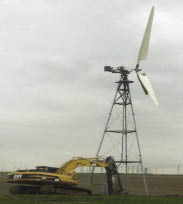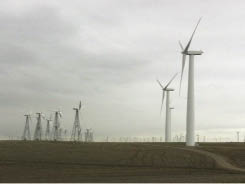The 20 year life span of some turbines is coming to an end in California and in what is described as the most “premo” wind country in the state. EnXco’s Permitting Director Rick Miller spoke on the transition at a recent AWEA event, discussing the wind industry challenges of taking down 100-kW turbines and replacing them with 2-MW units – decommissioning and repowering, as it’s called,
Although such tasks are many and varied, Miller touched on several themes. For example, when decommissioning a turbine, he suggests considering things such as the demobilization requirements of local jurisdictions. Some wind projects will have no definitive set of conditions built into the original wind project. “In that case, the locals may try to foist upon you some they have applied to new wind projects, and you have to decide which are legitimate and which are under negotiations,” he says.
Other aspects are potential lease agreements with property owners. If new turbines are on leased land, it’s important to work with the land-and-title people to make sure you understand the language used in the original contract. Some of it can be nebulous with respect to the requirements for satisfying the original lease agreements. Will the original power purchase agreements be renewed or renegotiated? And what is the exact sunset-termination date of the old contracts?

The 100-kW Kenetec turbine sits on a 18-m lattice tower, but not for long. Decommissioning with power equipment takes about 10 minutes.
A few concrete issues include looking into components that might be salvaged from the decommissioned turbine. Is there an aftermarket for parts for turbines in other places, and what is the value of trying to sell them versus recycling or disposing of them? “Disposal can be a big liability associated with decommissioning because you have to be certain that contractors understand what has to happen with old components,” says Miller. So companies are still subject to the same types of wind project regulations when decommissioning.
Questions to ask when repowering include: When is the best time to repower? Negotiations will involve the new power-purchase agreement. And what is the risk of canceling a contract that may not be complete?
Miller suggest thinking a couple steps ahead of events. For instance, in what condition are the old foundations? Are they in the way of the new wind project? And where are the collection lines, and will they pose a problem for the repowering scenario?
On the plus side, consider the benefits from repowering. “For example, we are hoping to capture some knowledge in baseline studies on, for example, avian mortality. That could eliminate some problems as we reuse the optimal wind sites.” WPE
Filed Under: News, Projects





